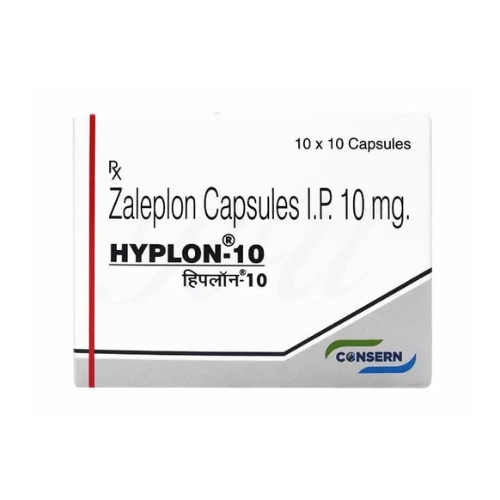Acute Lung Injury (ALI) is a condition characterized by widespread inflammation in the lungs, often leading to respiratory failure if left untreated. This condition can arise from a variety of causes, such as trauma, infections, or exposure to harmful substances, and requires immediate medical attention. ALI is commonly linked to Acute Respiratory Distress Syndrome (ARDS), a severe form of lung injury, which increases the need for specialized treatments.
As respiratory conditions become more prevalent—due in part to environmental pollution, lifestyle changes, and the lingering effects of COVID-19—the demand for effective ALI treatments has grown. In 2023, the market for ALI treatments was valued at USD 3.19 billion, and it is projected to grow at a CAGR of 3%, reaching USD 4.17 billion by 2032. This growth is driven by advancements in respiratory treatment technologies and increasing awareness of the condition among healthcare professionals and the general population.
Key Trends Shaping the Acute Lung Injury Treatment Market
1. Rising Prevalence of Respiratory Disorders
- Respiratory diseases are on the rise globally due to factors such as increasing air pollution, smoking, and rising cases of infectious diseases like COVID-19 and influenza. These factors contribute to the incidence of ALI, creating a greater demand for effective treatment options.
- According to the World Health Organization (WHO), respiratory conditions are among the leading causes of death worldwide, highlighting the need for robust treatment solutions.
2. Technological Advancements in Respiratory Treatments
- Recent technological advancements are transforming ALI treatments, with innovations in mechanical ventilation and Extracorporeal Membrane Oxygenation (ECMO), which provide more effective oxygenation support for patients with severe lung damage.
- Non-invasive ventilation methods like High-Flow Nasal Cannula (HFNC) therapy are also gaining popularity, especially in intensive care units, as they reduce patient discomfort, hospital stays, and healthcare costs.
3. Growing Focus on Minimally Invasive Treatments
- Minimally invasive treatments are becoming more popular due to lower associated risks, shorter recovery times, and reduced healthcare costs. For example, HFNC therapy is increasingly used in cases of moderate ALI, providing an effective alternative to traditional invasive methods.
- Many hospitals are adopting these techniques, especially in developed countries, to reduce the overall strain on healthcare systems while providing effective patient care.
4. Investment in Research and Development
- Investment in R&D is a significant driver of innovation in the ALI treatment market. Major pharmaceutical companies are exploring advanced drug formulations, therapies, and devices to improve treatment outcomes for ALI patients.
- Companies such as GSK plc and Medtronic are at the forefront, developing cutting-edge technologies that offer enhanced treatment efficacy and reduced side effects. The increase in clinical trials also highlights the industry’s commitment to bringing novel solutions to the market.
Market Segmentation and Insights
By Treatment Type
- Pharmaceutical Interventions: This includes anti-inflammatory drugs, corticosteroids, and other medications aimed at reducing lung inflammation and preventing further damage. With a focus on improving drug delivery methods, pharmaceutical companies are working on advanced therapies that can be used in conjunction with mechanical support.
- Mechanical Ventilation and ECMO: These are essential for patients with severe ALI. ECMO, in particular, acts as a temporary substitute for the heart and lungs, providing life-saving oxygenation support. These treatments are especially critical in intensive care units.
- Fluid Management: Proper fluid management is essential in preventing fluid overload, a condition that can worsen ALI. Maintaining the right fluid balance is crucial to managing the disease and supporting the patient’s recovery.
By End-User
- Hospitals: As the primary treatment centers for ALI, hospitals play a crucial role in the market, particularly for patients requiring intensive care and specialized treatment.
- Research Institutes: These institutions contribute significantly to the market by driving innovation and conducting clinical trials on new treatments and technologies.
- Specialty Clinics: Specialty clinics are increasingly offering advanced respiratory care services, especially in regions with high prevalence rates of respiratory conditions.
By Region
- North America leads the ALI treatment market due to advanced healthcare infrastructure, robust investments in medical research, and a high prevalence of respiratory disorders. The region’s well-established healthcare system supports the adoption of innovative treatment methods.
- Asia-Pacific is anticipated to grow rapidly due to the rising burden of respiratory diseases, increasing healthcare expenditure, and government support for healthcare advancements.
Competitor Landscape and Key Players
The ALI treatment market is highly competitive, with companies actively investing in R&D, forming partnerships, and exploring acquisition opportunities to strengthen their market position. Here are some of the key players:
- Bayer AG: Known for its pharmaceutical products, Bayer is investing in anti-inflammatory drugs that can mitigate lung inflammation associated with ALI.
- GSK plc: GSK has been a leader in respiratory health, with ongoing clinical trials focusing on new drugs to manage inflammation and support lung function.
- General Electric and Koninklijke Philips N.V.: Both companies focus on developing advanced medical devices and diagnostics, particularly in areas like ventilators and imaging systems to aid in ALI treatment.
- Medtronic and Linde plc: Specializing in medical technology, these companies offer products that support respiratory care, including mechanical ventilators and ECMO devices.
- Pfizer Inc. and Teva Pharmaceutical Industries Ltd.: These pharmaceutical giants are researching and developing new medications for ALI and other respiratory disorders.
- ONY Biotech Inc. and Gilead Sciences, Inc.: Known for their work in biotech and respiratory treatments, these companies are focusing on innovative therapies and biologics for ALI patients.
Trending Topics in ALI Treatment
1. Innovative Clinical Trials
- The number of clinical trials for ALI treatments is increasing, with many focusing on the potential of stem cell therapy and genomic medicine. These trials aim to uncover treatments that can directly target and repair lung tissues, potentially revolutionizing ALI care.
- Recently, regenerative medicine approaches, such as using stem cells to repair damaged lung tissue, have shown promising results, sparking interest from healthcare providers and investors alike.
2. Government and Private Sector Funding
- Governments and private organizations are investing heavily in respiratory health research. The National Institutes of Health (NIH) and other organizations provide grants and funding to advance ALI treatment options.
- In addition, the private sector is seeing an influx of venture capital, as investors recognize the potential for high returns on innovations in ALI treatment.
3. Digital Health Integration
- Digital health technologies, such as remote patient monitoring and AI-driven analytics, are transforming ALI care by enabling healthcare providers to track patient data in real-time. These technologies help personalize treatment plans, improve patient outcomes, and reduce hospitalization times.
- AI tools are also used in diagnostics, helping physicians assess lung damage quickly and accurately, which is crucial in ALI cases where early intervention can make a significant difference.
Future Outlook: What’s Next for the ALI Treatment Market?
Looking ahead, the ALI treatment market is expected to experience steady growth as advancements in medical technology and an increased focus on respiratory health drive innovation. AI and machine learning are anticipated to play a greater role in patient monitoring and diagnostics, while new treatments like stem cell therapies may offer targeted solutions with fewer side effects. Additionally, as more countries adopt stringent air quality regulations, the reduction in respiratory disorders may shift the focus towards preventive care.








